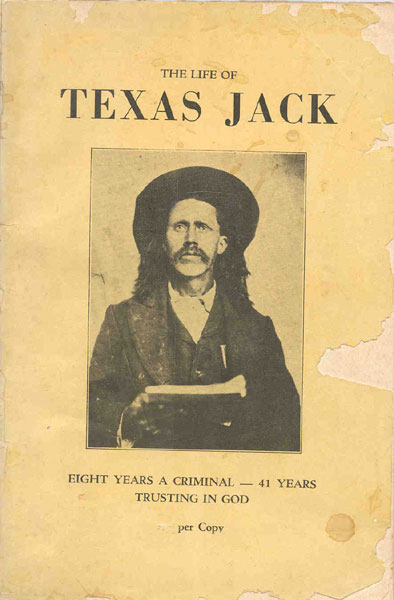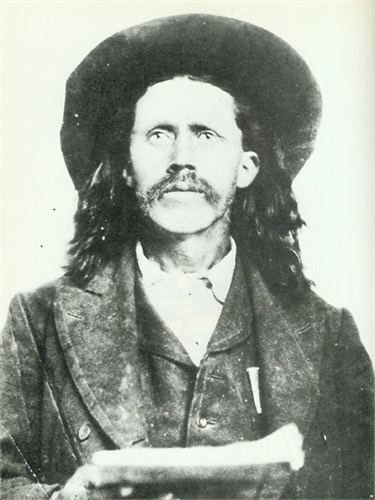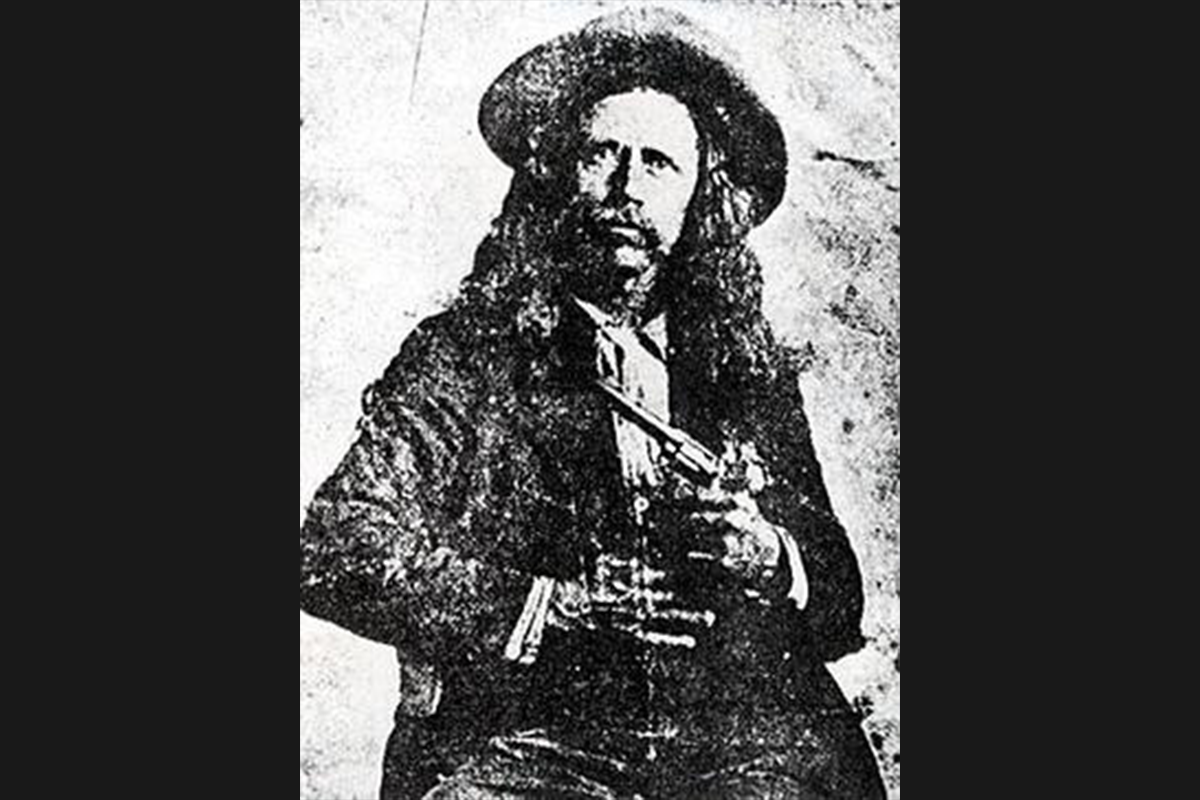
Texas Jack Reed: The Duality of a Wild West Icon
In the rugged tapestry of the American West, where legends were forged in the crucible of harsh landscapes and even harsher realities, few figures embody the shifting sands of frontier life quite like Texas Jack Reed. Not to be confused with the more famous John "Texas Jack" Omohundro, this lesser-known but equally compelling figure carved out his own indelible mark, living a life that straddled the volatile line between law and lawlessness, between the raw authenticity of the plains and the manufactured glamour of the stage. His story is a vibrant, often contradictory, narrative of a man perpetually in motion, reflecting the very spirit of a nation finding its identity.
Born John Reed in the mid-19th century – the exact date and place remain somewhat shrouded in the mists of historical ambiguity, a common trait for many frontier characters – Texas Jack’s early life was likely shaped by the tumultuous era. While specifics are scarce, it’s understood that he hailed from the Southern states, a background that would have imbued him with the horsemanship and resilience characteristic of his later exploits. The moniker "Texas Jack" itself suggests a deep connection to the Lone Star State, a land synonymous with cowboys, cattle drives, and a fierce independent spirit. He arrived in the West during its zenith, a time when the vast territories were still untamed, and opportunity, as well as danger, lurked around every corner.
Reed’s initial forays into the frontier were typical of many young men seeking fortune and adventure. He was, by all accounts, a skilled cowboy, working cattle drives that stretched for hundreds of miles across treacherous terrain. This foundational experience honed his riding skills, his marksmanship, and his ability to survive in the wild, attributes that would serve him well in the years to come. It was during these formative years that he earned a reputation for being tough, resourceful, and possessing an unflinching gaze that bespoke a man who had seen his share of hardship. As one contemporary observer reportedly noted, "He had the look of a man who could sleep soundly with a rattlesnake for a pillow, and wake up ready for a fight."

However, Reed’s path soon diverged from that of a mere cowboy. The burgeoning boomtowns of the West – Dodge City, Deadwood, Tombstone – were magnets for individuals of all stripes: prospectors, entrepreneurs, gamblers, and, inevitably, outlaws. It was in these lawless enclaves that Reed began to truly distinguish himself, sometimes as an enforcer of justice, other times as a participant in the very chaos he sought to quell. His ambivalence towards the strictures of law and order was not uncommon; the line between a deputy and a desperado was often blurred, dictated more by circumstance and personal code than by formal appointment.
One of the most fascinating aspects of Texas Jack Reed’s career was his documented association with some of the West’s most iconic figures. He rode with Pat Garrett, the legendary lawman famous for tracking down Billy the Kid. This alliance, though perhaps fleeting, speaks volumes about Reed’s capabilities and trustworthiness, at least in the eyes of a man like Garrett who demanded absolute competence in his pursuit of justice. To be accepted into Garrett’s circle meant Reed possessed not only courage but also a keen understanding of tracking, strategy, and the unforgiving nature of frontier justice.
Yet, his life was not solely confined to the side of the law. Reed was known to frequent the same saloons and gambling halls as notorious outlaws, engaging in card games and sharing drinks with men who lived outside society’s rules. This dual existence allowed him a unique perspective, granting him insights into both the criminal underworld and the efforts to bring it to heel. It’s plausible that this intricate dance between roles served him well, allowing him to gather intelligence, navigate dangerous situations, and perhaps even bend the rules when he felt it necessary for a greater, or at least a personal, purpose. This fluidity defined his character; he was a chameleon, adapting to his environment with an almost preternatural ease.
One of the more dramatic episodes in Reed’s life, and a testament to his proximity to major events, involved his presence in Deadwood, Dakota Territory, during its notorious gold rush era. It was here, in 1876, that he witnessed the assassination of Wild Bill Hickok, one of the most celebrated figures of the Wild West. Reed was reportedly in Saloon No. 10 when Jack McCall shot Hickok in the back of the head during a poker game. Reed’s account of the event, though not as widely documented as others, would have been that of a direct observer, a man who saw a legend fall. This experience undoubtedly solidified his understanding of the West’s inherent brutality and the swift, unforgiving hand of fate that could strike down even the most formidable individuals. It’s a poignant detail that places him squarely in the heart of frontier history, not merely as a participant but as a witness to its defining tragedies.
Beyond his roles as a cowboy, lawman, and occasional shadow figure, Texas Jack Reed, like many of his contemporaries, eventually found himself drawn to the burgeoning spectacle of the Wild West show. The transition from living the frontier life to performing it for an eager public was a common trajectory for many celebrated figures of the era, from Buffalo Bill Cody to Annie Oakley. Reed, with his authentic cowboy skills and rugged charisma, was a natural fit.
He joined forces with Buffalo Bill Cody, a man who masterfully capitalized on the public’s fascination with the West. Reed performed in Cody’s "Wild West, Rocky Mountain, and Prairie Exhibition," a precursor to the legendary Buffalo Bill’s Wild West. Here, Reed showcased his riding prowess, his sharp-shooting abilities, and his command of the lasso, bringing a genuine slice of the frontier to audiences across America and, eventually, Europe. These shows were more than just entertainment; they were living history lessons, albeit often romanticized ones, and Reed played a pivotal role in shaping the public’s perception of the American cowboy hero. He wasn’t just acting the part; he was being the part, lending an air of authenticity that captivated audiences. "He carried the dust of the plains in his boots," a newspaper critic might have written, "and the spirit of the untamed West in his every movement."
However, Reed’s ambition extended beyond merely being a performer in someone else’s show. He eventually ventured out to establish his own theatrical troupe, "Texas Jack Reed’s Wild West Show." While it never achieved the monumental scale or enduring fame of Cody’s enterprise, Reed’s show was a significant undertaking in its own right. It highlighted his entrepreneurial spirit and his desire to tell his own version of the Wild West story. These shows were arduous, demanding constant travel, management of a diverse cast of performers (including Native Americans, cowboys, and sharpshooters), and the logistical nightmare of transporting horses and equipment. It was a testament to Reed’s tenacity and leadership that he managed to keep his show on the road, albeit for a shorter period than Cody’s.
It was during his time as a showman that Reed also found personal connection. He married an actress named Anna Hynes, a performer who shared his world of footlights and travel. This union provided a rare glimpse into the personal life of a man who largely operated in the public eye, yet remained an enigma. Anna’s presence would have offered a degree of stability and companionship amidst the relentless pace of show business, a stark contrast to the solitary existence of a frontier scout or cowboy.

Despite his vigor and robust outdoor life, Texas Jack Reed’s health began to decline. The harsh conditions of the frontier, combined with the rigorous demands of constant travel and performance, took their toll. Like many of his era, he contracted tuberculosis, a devastating disease that claimed countless lives. In a poignant twist, his final days were spent not on the open range or under the spotlight, but in the mining town of Leadville, Colorado.
Leadville, a booming but brutal silver camp, was a far cry from the vast prairies where he had spent his youth. It was there, on October 24, 1880, at the relatively young age of 33, that Texas Jack Reed passed away. His death marked the end of a life lived at full throttle, a life that encompassed the myriad experiences of the American West. He was buried in Leadville, his grave a quiet monument to a man whose existence was anything but.
The legacy of Texas Jack Reed is one of a multifaceted character, a true product of his time. He was a man who effortlessly transitioned between the real and the theatrical, between the dangerous freedom of the frontier and the structured entertainment of the stage. While his name may not resonate as loudly as those of Hickok or Cody, his contributions to the mythos of the West are undeniable. He helped shape the image of the American cowboy, not just through his genuine experiences but also through his performances, influencing how generations would perceive this iconic figure.
His story serves as a vital reminder that the Wild West was not a monolithic entity, but a complex mosaic of individuals, each with their own intricate narrative. Texas Jack Reed was more than just a name; he was a living embodiment of the era’s contradictions and its boundless spirit. From the dusty cattle trails to the grimy saloons of Deadwood, from riding alongside lawmen to performing for adoring crowds, Reed’s life was a testament to the adventurous, often perilous, journey of self-discovery in a rapidly changing world. He was, in essence, the spirit of the Wild West made flesh – raw, adaptable, and forever seeking the next horizon, whether real or imagined.

